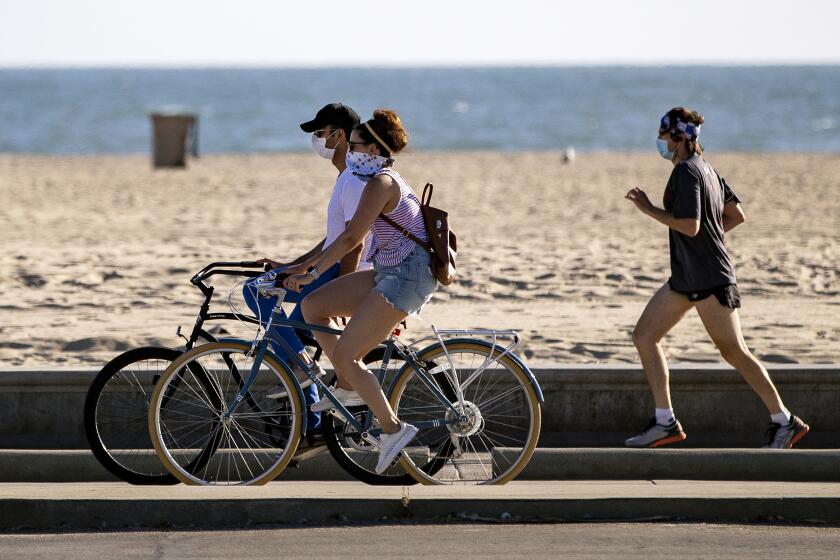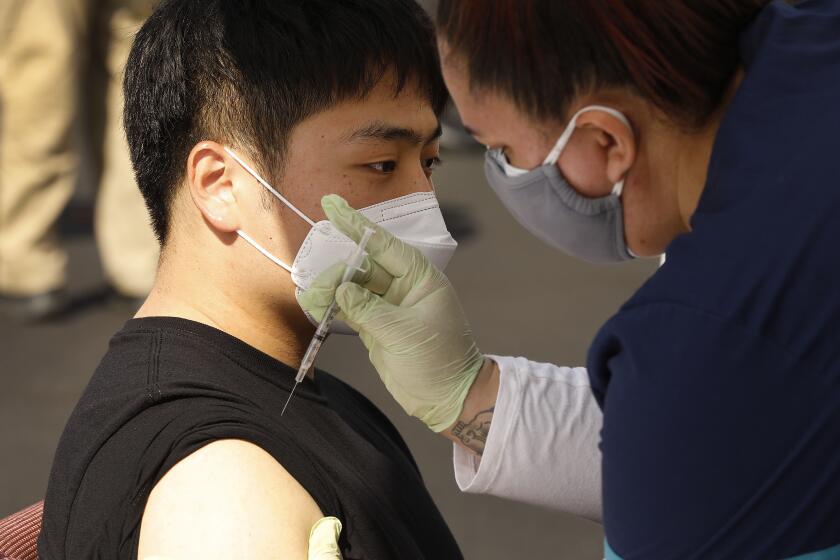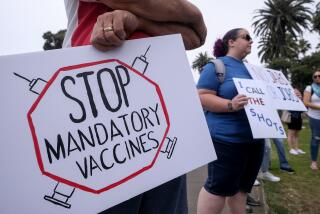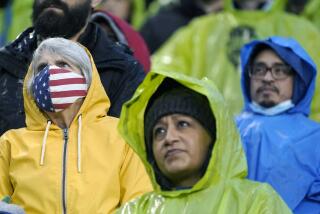New CDC mask guidance draws clear line between vaccinated and unvaccinated Americans
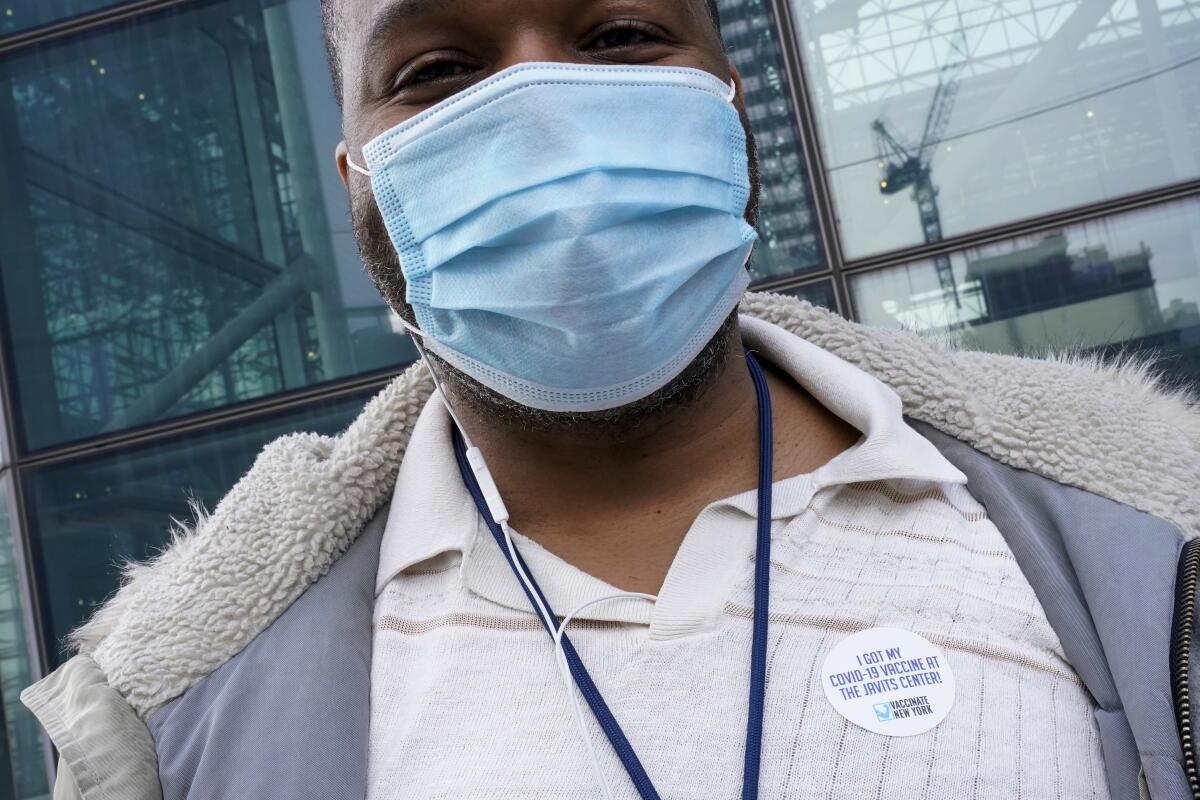
- Share via
In the eyes of U.S. health officials, there are two groups of people: those who are vaccinated against COVID-19 and those who are not. And they’re stepping up their efforts to get unvaccinated Americans to switch sides.
New guidelines from the Centers for Disease Control and Prevention regarding when people can safely shed their masks make the benefits of vaccination abundantly clear. Instead of focusing on the serious and potentially deadly risk of COVID-19 to those who aren’t immunized, they emphasize the extent to which those who are can return to an almost-normal life.
“Over the past year we have spent a lot of time telling Americans what they cannot do, what they should not do,” Dr. Rochelle Walensky, director of the CDC, said in a briefing Tuesday. “Today I’m going to tell you some of the things you can do — if you are fully vaccinated.”
Walensky painted a detailed picture of the greater freedom vaccinated Americans can safely enjoy compared with their unvaccinated peers. She and other health officials hoped that doing so would incentivize those who haven’t yet rolled up their sleeves to change their minds and get their shots.
“If you are fully vaccinated, things are much safer for you than those who are not yet fully vaccinated,” Walensky said, emphasizing the divide. “This guidance will help you, your family, and your neighbors make decisions based on the latest science and allow you to safely get back to things you love to do.”
The upside of immunization includes outdoor reunions with extended family and al fresco dining with friends — all without wearing a mask.
With a mask, vaccinated people can safely attend crowded concerts and sporting events, watch a movie inside a real theater, and take a high-intensity exercise class. None of those activities are considered safe for people who aren’t vaccinated.
The CDC says fully vaccinated Americans don’t need to wear masks outdoors anymore unless they are in a big crowd of strangers.
President Biden, who got his first dose of the Pfizer-BioNTech vaccine in December, spelled out his administration’s message in a briefing on the North Lawn of the White House.
“The bottom line is clear: If you’re vaccinated, you can do more things more safely,” he said. “Go get the shot.”
The new message could give the country the booster shot it needs to prevent the country’s vaccination campaign from losing too much steam. More than 54% of all adults in the U.S. have now received at least one shot of COVID-19 vaccine, and more than 37% are fully vaccinated, according to the latest figures from the CDC.
But there’s still a long way to go to achieve herd immunity. That will occur when so many people are immune to the coronavirus that it won’t be able to find new hosts to infect and the outbreak will peter out. Experts estimate that up to 85% of the population will need to be vaccinated to reach that protective threshold.
Officials also feel a sense of urgency to get the country vaccinated before more dangerous coronavirus variants have the opportunity to take hold and spread.
A highly contagious variant from the United Kingdom already has become the dominant strain in the U.S., but it is vulnerable to COVID-19 vaccines. Other variants of concern have shown some resistance to vaccines and treatments.
Yet vaccination rates have slowed in recent weeks. According to CDC data, the seven-day moving average of daily vaccinations peaked well above 3 million per day on April 11, but dropped to just above 2.5 million last week.
With so many Americans becoming immunized, it’s natural to look ahead and wonder how long this protection will last. The answer: No one knows.
Around the country, some communities are showing such little interest in the vaccines that officials have turned down shipments. About half of the counties in Iowa stopped asking the state for new doses, and roughly three-quarters of counties in Kansas have declined new shipments at least once over the last month. Officials in Mississippi asked the federal government to ship vials in smaller packages so that unused doses don’t go to waste.
“We’re at this point … where we have greater supply than we have demand,” White House Press Secretary Jen Psaki said last week.
The Biden administration has responded by offering more financial and technical assistance to states, ramping up media campaigns and sending more vaccine directly to primary care physicians. The new messaging adds to that.
“There’s always been a push to get people vaccinated,” said Dr. Timothy Brewer, an infectious disease expert at UCLA. The CDC’s updated guidance represents “more of a carrot approach.”
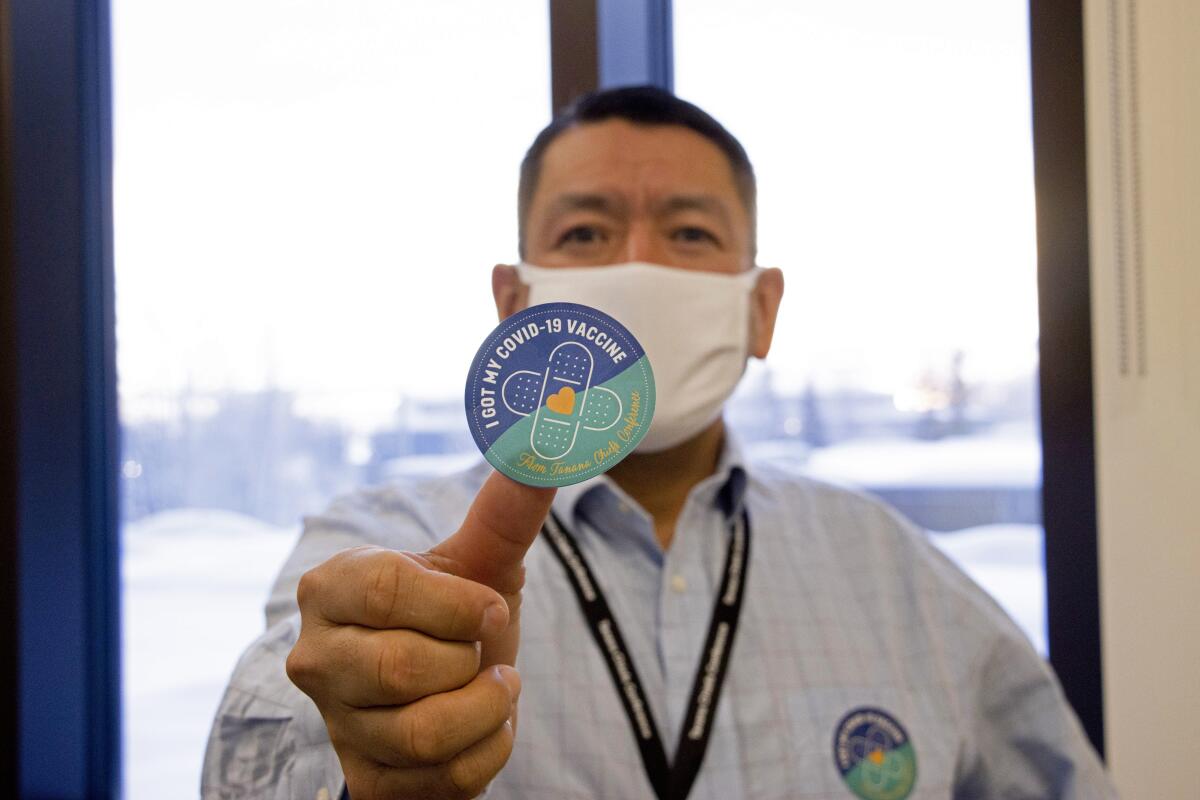
For instance, the CDC used to tell everyone that restaurant dining was safer when seated outdoors than indoors. Now it says vaccinated people can safely dine together outside without wearing masks but warns those who are not vaccinated that the same meal would be moderately risky, even with masks on.
Likewise, eating and drinking indoors is safe for vaccinated people who wear masks, but not for unvaccinated people no matter how many precautions they take.
Heading inside for a spin class, pilates workout or date with a treadmill used to be discouraged for everyone. Now such workouts are deemed safe for vaccinated people who wear masks but are still unsafe for those who lack the protection of the shots.
Drive-in movies and DIY backyard theaters used to be preferred across the board. As of Tuesday, vaccinated people alone have the CDC’s blessing to return to movie theaters with masks.
Vaccinated people with masks are also cleared for indoor worship services — and can even sing in a choir. Without the vaccine, neither activity is considered safe.
“I am optimistic that people will use this information to take personal responsibility to protect themselves and to protect others,” Walensky said.
What kinds of activities are safe for families to do when the adults are fully vaccinated but the kids aren’t?
Dr. Monica Gandhi, an infectious disease specialist at UC San Francisco, commended the CDC for giving vaccinated people more leeway.
“Loosening restrictions as we go along can serve as a motivating factor to get vaccinated for those still on the fence,” she said.
The science supports the move, Gandhi and others said. For instance, she pointed out that coronavirus transmission is roughly 5,000 times less likely to occur outdoors than inside.
Dr. Anthony Fauci, director of the National Institute of Allergy and Infectious Disease, cited laboratory studies, clinical trials and vaccine rollouts to argue that the more Americans are vaccinated, the safer they’ll be.
Real-world data from Israel, where more than half of the population is fully protected by the Pfizer-BioNTech vaccine, show that the shot is highly effective against the U.K. variant that is prevalent here.
And in the U.K., where more than 60% of adults are fully vaccinated, a campaign that employs the Pfizer-BioNTech shots along with ones made by Moderna and AstraZeneca has kept the virus at bay.
In both countries, “as the vaccine doses increase, the cases come down,” Fauci said.
The same is likely to be true for the Johnson & Johnson vaccine, though more data are needed, he said.
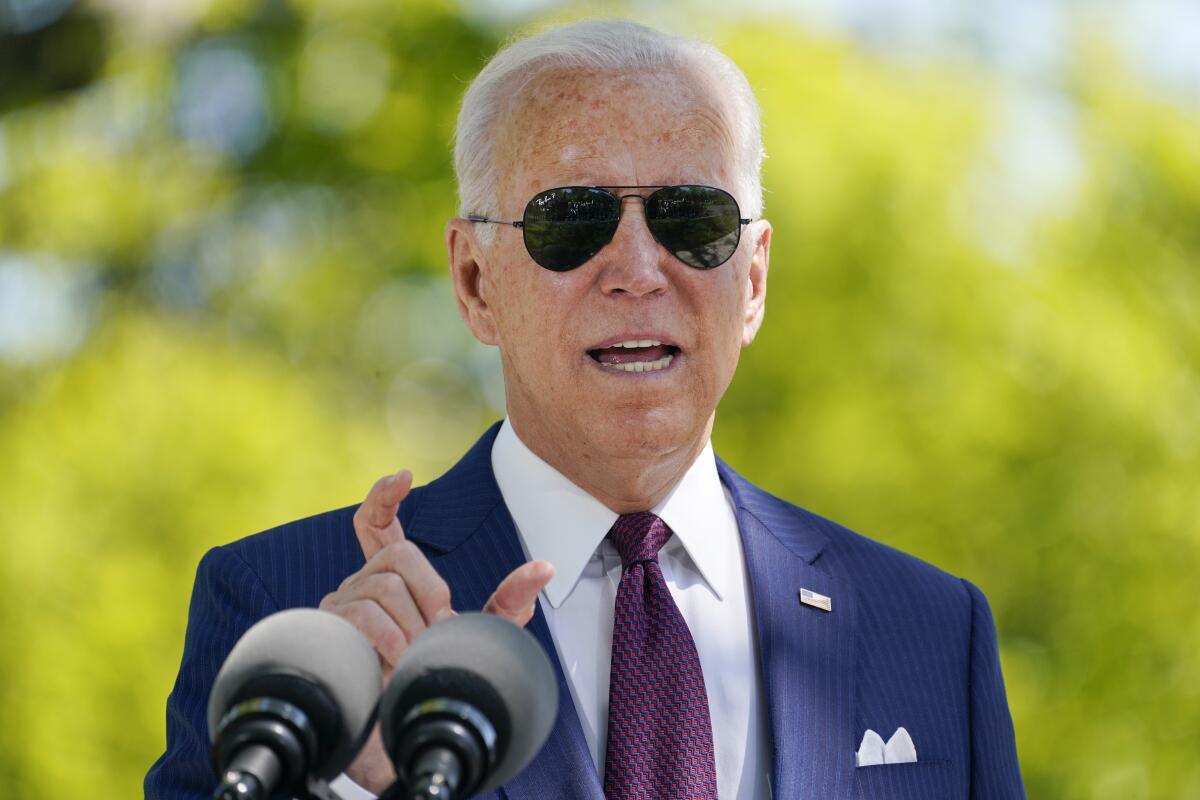
It did not take long for the president to start leading by example. At his Tuesday briefing, Biden wore a mask as usual as he walked to a microphone, then removed it to make his remarks.
But in a shift, he kept it off as he walked back to the White House.
Smiling broadly, the president said he wouldn’t put it back on until he went inside.
Times staff writer Chris Megerian in Washington contributed to this report.
